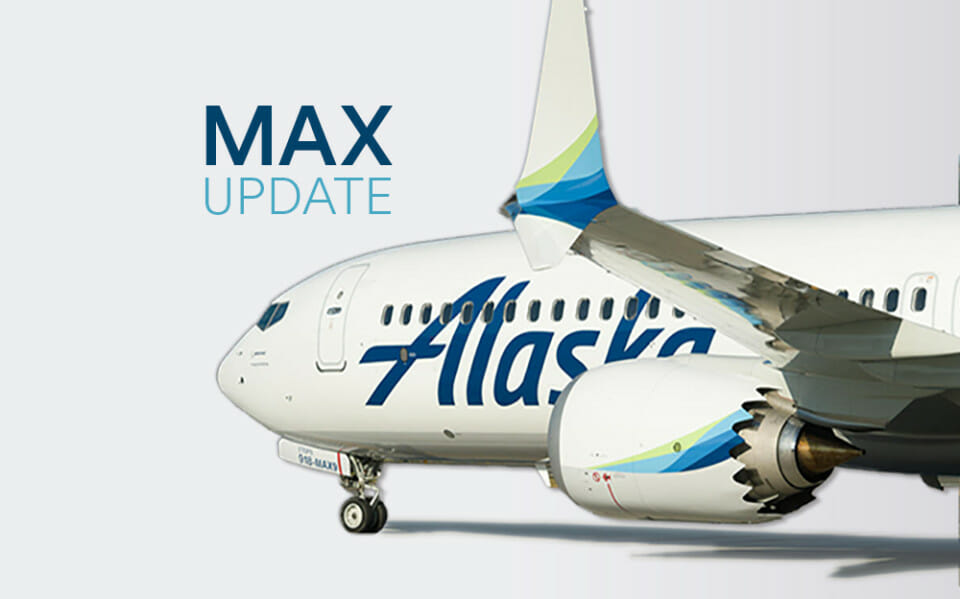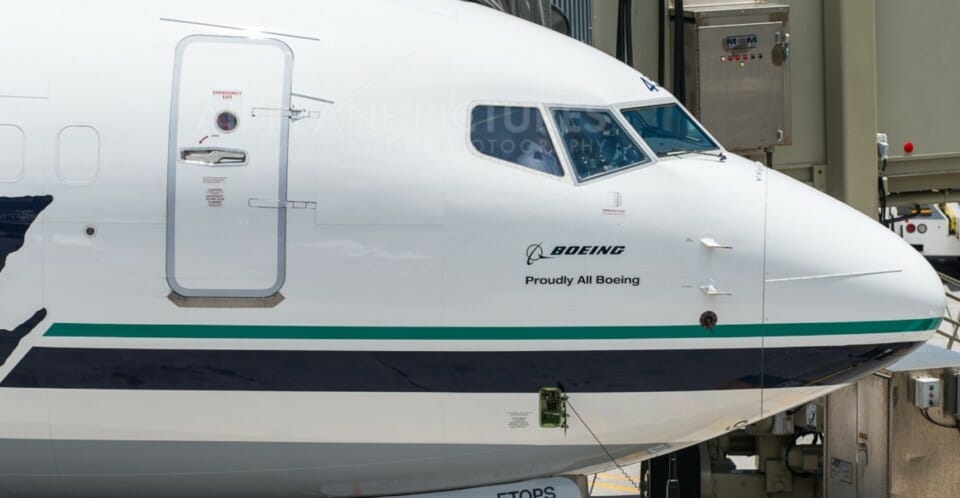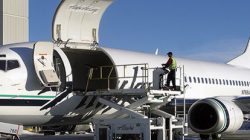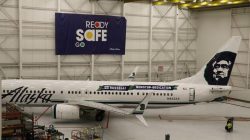Alaska Airlines announced today an agreement in principle with Boeing to restructure the airline’s order to receive a total of 68 Boeing 737-9 MAX aircraft with options for an additional 52 planes.
The Agreement With Air Lease Corporation
Last month, Alaska Airlines entered into a lease agreement with Air Lease Corporation (ALC) to obtain 13 new Boeing 737-9 MAX aircraft. This was a brilliant move on the airline’s part because it built in a workable exit strategy for the Airbus A320 family of aircraft inherited from the purchase of Virgin America. The used aircraft market is bloated with a high surplus of used airlines. This agreement gives the airline the flexibility to return the A320 aircraft as it receives the 737MAX aircraft. You can read my post on this acquisition here.
“Proudly All Boeing”
Proudly All Boeing was painted on the nose of Alaska’s 737 aircraft prior to the purchase of Virgin America. There is no doubt that the future of the Alaska Airlines fleet plan will be the return to an all Boeing fleet.
Alaska Airlines announced today an agreement in principle with Boeing to restructure the airline’s order to receive a total of 68 Boeing 737-9 MAX aircraft with options for an additional 52 planes.
Alaska is scheduled to receive 13 planes in 2021; 30 in 2022; 13 in 2023; and 12 in 2024. The delivery schedule will largely replace Alaska’s Airbus fleet and moves the airline substantially toward a single, mainline fleet that’s more efficient, profitable and environmentally friendly, and that will enhance the guest experience and support the company’s growth. This restructured agreement with Boeing incorporates Alaska’s announcement last month to lease 13 737-9 aircraft.
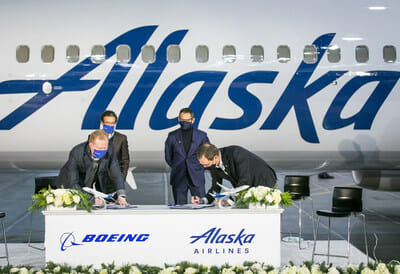
“We are extremely proud to be announcing this transformative agreement with Boeing,” said Brad Tilden, CEO of Alaska Air Group. “We believe in this airplane, we believe in our strong partnership with Boeing, and we believe in the future of Alaska Airlines and the incredible opportunities ahead as we climb our way out of this pandemic. We could not ask for a better partner than Boeing and we are delighted to be standing side by side with them as we work together to get our economy back on its feet.”
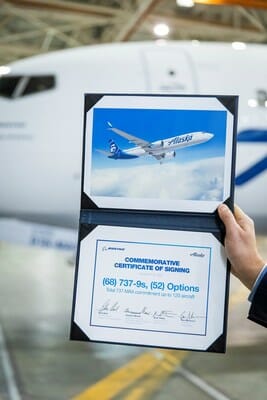
“Alaska Airlines has done a tremendous job of weathering the impacts from the Covid-19 pandemic and is well-positioned to return to its growth trajectory and strengthen its standing as one of the top U.S. airlines. With Alaska’s industry-leading reputation for safety, sustainability and customer service, we are honored that the airline has chosen to invest in its future with a significant purchase of additional Boeing 737 airplanes,” said Stan Deal, president and CEO, Boeing Commercial Airplanes. “We are grateful for Alaska’s trust and partnership. Our team is focused on delivering their first 737 MAX jets and helping ensure a safe and seamless entry into service.”
The Future Of Alaska Airlines Fleet Plan
After significant work to manage costs and liquidity through the pandemic, support employees and jobs, and to ensure the safety of both employees and guests, Alaska’s priority is to establish strong recovery and growth in the decade ahead. Alaska also prefers to own aircraft when it makes the best financial sense for the company. This decision enables the company to exit 61 expensive, short-term leases for its Airbus fleet that were inherited by Alaska through its acquisition of Virgin America. Furthermore, compared to the Airbus A320, the 737-9 has more seats, better fuel efficiency, lower emissions and lower maintenance costs.
The agreement includes mechanisms to adjust the timing of deliveries to meet economic conditions, giving the airline substantial flexibility to manage its fleet in step with network demand. Alaska’s 52 aircraft options are for deliveries between 2023 to 2026.
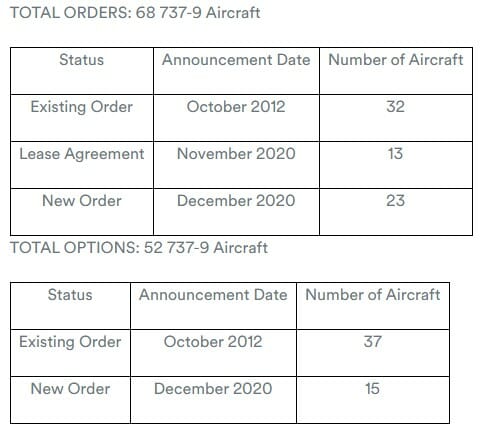
Operating a single-type fleet makes economical sense. It allows for the training of flight and maintenance crews to one aircraft type. This substantially reduces training and certification costs. With the current mixed fleet, Alaska flight and ground crews must be certified for both the 737 and A320 type aircraft. The cost savings extend to a common maintenance plan and replacement parts commonality. The goal here is to carry spare parts of one aircraft type which will reduce the MRO costs for the fleet.
Alaska ordered two 737MAX simulators to be delivered to their Seattle operations center. These simulators were to prepare pilots for the 32 737MAX aircraft on order. Full-motion simulators cost around $7-8 million per simulator. This kind of investment definitely demonstrates a commitment to operate the 737MAX.
Bargain Basement Prices
To say that Boeing needs to get record new purchases on their order book would be a massive understatement. Boeing needs orders and that means that it is a buyer’s market for the 737MAX. Boeing has completed airframes from orders that have been canceled. These aircraft are known as “whitetails” and the Alaska order will include whitetail aircraft. Alaska CEO Brad Tilden is a very cost-savy manager and I’m sure he got these additional airframes for a great price for the airline.
In addition to flying newer aircraft, the airline will also benefit from the cost savings associated with a 20% less fuel burn. It will also allow Alaska to reduce its carbon footprint by 20% for each new aircraft.
Final Thoughts
Alaska Airlines took advantage of the perfect opportunity to modernize its fleet, return to a single aircraft operating type at a bargain-basement price. This order follows a 75 aircraft purchase by Ryan Air for exactly the same reasons. The airline is scheduled to receive its first 737MAX-9 next month and continue to receive new 737MAX aircraft through 2026 which will reduce the average aircraft age significantly.

